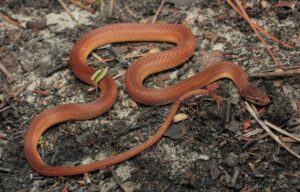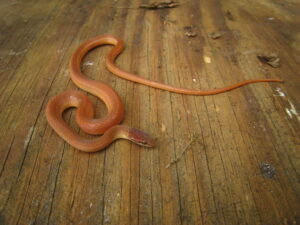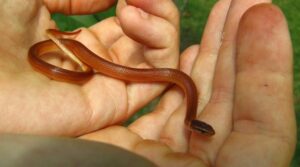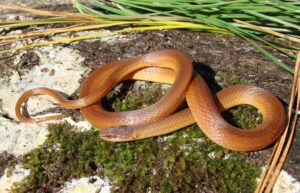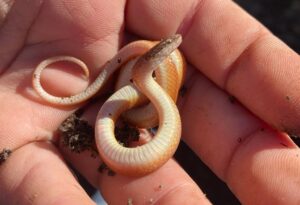Pine woods snake, also known as the brown-headed snake, pine wood litter snake, and yellow-lipped snake, is found in the southern parts of the United States. These rare-fanged snakes have fangs behind their jaws, making them mildly venomous. One could mainly spot these snakes in and around pine habitats resulting in their name.
Scientific Classifications
- Suborder:Serpentes
- Family:Colubridae
- Genus:Rhadinaea
- Species:R. flavilata
Conservation Status
Description
Size
The adult pine woods snake measures 10 to 13 inches, including tail length.
Color and Appearance
They show diversity in body color that varies from dark orange to reddish-brown to yellowish-brown. Their undersides have a whitish or yellowish coloration, while the area around their eyes has dark stripes running across. These snakes even have yellowish scales on their upper lips, resulting in their name, yellow-lipped snake.
Are They Dangerous to Humans
Though not dangerous to humans, these snakes have toxic saliva with which they subdue their prey. Because of their unaggressive nature, they may make good pets.
Pine Woods Snake at a Glance
Distribution
They have a scattered population in the coastal regions of North Carolina and South Carolina, a significant part of peninsular Florida, and limited portions of Louisiana, Georgia, and Alabama.
Habitat
They prefer woodland habitats; as their name suggests, one could spot them around pine forests. However, they even damp woodlands, often found underneath barks and within stumps and rotten logs.
Lifespan
They don’t live for long, and they survive for not more than three years in captivity.
Predators
The common predators of the pine woods snake include carnivorous animals of the pine forests, shrews, birds, and toads, snake species like the kingsnake, and southern black racer. When picked by predators, they don’t bite but release an odor with a foul smell as a defense mechanism.
Diet
They feed on small lizards, salamanders, earthworms, frogs, and snakes. They are not constrictors and don’t coil around their prey. Instead, these snakes immobilize their enemy through the mildly toxic venom they deliver by using their long teeth at the end of their mouth. However, in the case of smaller prey, they mostly swallow them alive.
Reproduction
These snakes are oviparous, with the mating season occurring in spring. During summer, the females lay between one and four eggs with an incubation period of 6-8 weeks. Certain females may lay two egg clutches in a year.
Source
herpsofnc.org, inaturalist.ca, reddit.com, georgiabiodiversity.org

